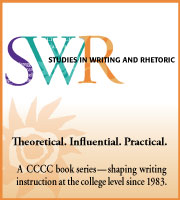Following are key definitions and how they are used in the specific context of OWI for the purposes of this document.
- Accessible: An information technology system that is accessible is one that can be operated in a variety of ways and does not rely on a user’s single sense or ability. For example, a system that provides output only in visual format may not be accessible to people with visual impairments, and a system that provides output only in audio format may not be accessible to people who are deaf or hard of hearing. Some individuals with physical and/or learning disabilities may need accessibility-related software or peripheral devices in order to use systems that comply with Section 508 (Guide to Disability Rights Laws). For the purposes of this document, accessibility issues also include those that affect multilingual writers and writers with socioeconomic inequality for whom literal access to technology has or can be problematic.
- Assistive technology or devices: Assistive technology is “any item, piece of equipment, or product system, whether acquired commercially off the shelf, modified, or customized, that is used to increase, maintain, or improve the functional capabilities of individuals with disabilities” (29 U.S.C. Sec 2202[2]). Examples include screen reader software, screen magnifiers, adapted keyboard and alternative input/ output devices, mobility devices, assistive hearing devices, and can include learning software, among many other things.
- Asynchronous: Referring to a learning modality that permits participants to communicate over flexible time periods; typically, there is a significant time lag (non-real-time) between and among interactions. Most often, asynchronous interactions occur through text although one-way voice and video communications also can be asynchronous.
- Digital environment: A learning setting that is computer-based or that uses other integrated technologies that can be accessed anywhere and anytime.
- Disability: According to the Americans With Disabilities Act (ADA), “the term ‘disability’ means an individual has a physical or mental impairment that substantially limits one or more of his/her major life activities or there is a record of such an impairment or an individual is regarded as having such an impairment.” Caused by injury, disease or medical condition, or neurological, chemical, or developmental factors, severe disabilities affect about 12% of the U.S. population.
- Distributed environment: A learning setting that is linked through a computer network while being geographically dispersed.
- Fully online: Any writing course that meets in a completely online-based setting through computer mediation with no scheduled face-to-face interactions among or between students and faculty.
- Hybrid: Sometimes called “blended,” any writing course that meets in both a distance-based or computer-mediated setting and in a traditional onsite classroom.
- Learning Management System (LMS): Also known as a “Course Management System” (CMS). Some of the most common examples are Blackboard, Moodle, Angel, and Sakai. These are online sites that house the course’s content and facilitate communication among teacher and students.
- Massive Open Online Course (MOOC): Also known as scalable online educational experience (SOE2). College classes that are (1) extremely large with as many as 50,000 or more participants, (2) open access to all who can pay when they are not free, (3) online with potential for both asynchronous and synchronous components, and (4) courses that enable various set-ups such as credit, noncredit, drop-in, or enrolled participants.
- Multimodal: Strategically using modes of communication beyond traditional alphabetic text, for example, still image, motion video, and sound.
- Online environment: A learning setting that is Internet-based (e.g., through the World Wide Web) or Intranet-based (e.g., through a common server).
- Online: Referring to any communication or activity, such as instruction, that is mediated by digital, Internet-connected technologies. In most contexts, the word online refers to text-based technologies (e.g., discussion boards, emails, blogs, chat), but it also can refer to other media, such as audio (e.g., podcasts) and video (e.g., video presentations, live video meetings).
- OWC: Online writing course.
- OWI: Online writing instruction.
- OWL: Online writing lab or online writing center
- Synchronous: Referring to a learning modality that permits participants to communicate in real time or nearly in real time. Many real-time synchronous interactions occur through two-way voice or voice and video. Many near-real-time synchronous interactions transpire using text in a chat-based scenario.












